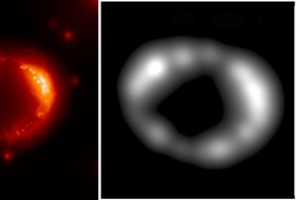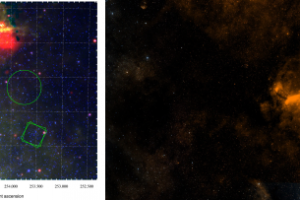Heating due to shocks traveling in the supernova remnant SN 1987 A

Shock waves are ubiquitous phenomena in astrophysics, occurring in a long list of different environments, from our Solar System to extragalactic and cosmological scales. Astrophysical shocks are particularly important since they occur in extreme conditions which can not be observed or reproduced on Earth. For instance, In the atmosphere of our planet the heating due to a traveling shock wave
» Read more






